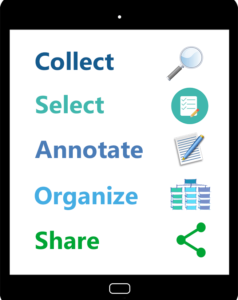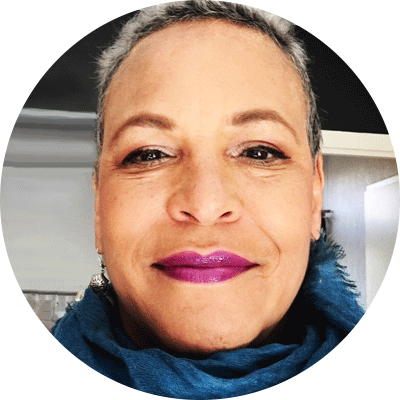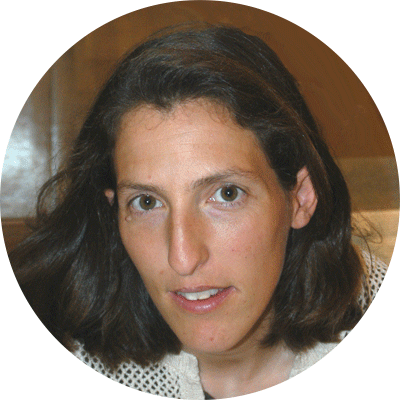“The times they are a’changin,” Bob Dylan first sang 55 years ago. Today, it doesn’t take a folk song to remind us that change is afoot; we can’t help but notice it. Consider how the smartphone and cloud computing have changed the way we access information, consume media, entertain ourselves, and communicate. We see changes in our students as well. Increasingly, teachers wonder how to engage and motivate students who have more access to information and are surrounded by more stimuli than previous generations. Then there are the changes occurring in the workforce thanks to emerging technologies like artificial intelligence, extended reality, robotics, and the internet of things (Philbeck & Davis, 2018, 18). As educators, how do we prepare our students for this new world when many of the jobs of the future have yet to be created?
While the future is unknown, it’s clear that change and continuous learning are now a constant. So too is an overload of information. An important key to preparing our students for the future is to help them develop transversal 21st century skills that will allow them to adapt to new situations and challenges: skills such as digital and media literacy, critical thinking, communication, collaboration and adaptability (Humans Wanted, 2018, 26-27)
Two strategies that are useful for developing 21st century skills are online curation (OC) and social annotation (SA).
Online Curation
Online curation is increasingly recognized as a must-have skill used for managing information overload. It involves
• purposefully collecting online content on a given topic;
• selecting the most relevant or interesting information;
• summarizing its significance for the collection;
• organizing it; and
• sharing it on a cloud-based platform.
Cloud-based platforms like Netboard.me and Padlet facilitate publication and collaboration. Students can curate individually or collaboratively and receive feedback on what they have curated from their teacher and peers. They can also publish their work to the class or the web instantly. The strategy affords opportunities for students to develop the following skills: research, digital literacy, critical thinking, organization, communication, and collaboration.
Social Annotation
To curate well students must also know how to consume media critically. Social annotation can help students learn to do so. Also, cloud-based SA platforms like Perusall, Hypothes.is, or Classroom Salon1 allow students not only to comment on elements of a discourse and see each other’s comments, they can also reply to each other’s annotations. Students can co-construct their understanding of a discourse while offering constructive feedback to peers and developing their ability to self-reflect.
New strategies often require new approaches and resources to implement them. With that goal in mind, Kelly MacDonald (Social Science), Heather Roffey (Biology), Judy Ingerman (Humanities) and Patti Kingsmill (Pedagogical Support and Innovation) formed the OCSA team. Our aim was threefold: learn to integrate OC and SA into the classroom, develop instructional strategies and resources to facilitate this process, and promote these to our colleagues. The OCSA team has occasionally been joined by other teachers: Jennifer Mitchell (Humanities) who is experimenting with OC, Lissiene Neiva (Biology), Kevin Lenton (Physics), and Aurora Flewwelling-Skup (English), who are implementing SA into their courses.
The metaliterate learner is someone who not only consumes, but actively produces and shares content in participatory, collaborative digital environments while reflecting on their learning and how they behave and interact constructively online.
Our first step was to familiarize ourselves with metaliteracy2—a comprehensive framework developed at SUNY3 which encompasses multiple literacies while promoting critical thinking, metacognition, and collaboration. We found the framework useful as it encompasses real world and digital environments. The metaliterate learner is someone who not only consumes, but actively produces and shares content in participatory, collaborative digital environments while reflecting on their learning and how they behave and interact constructively online.
Next, we defined our objectives for using OC and SA in the classroom. Following a backward design4 process, we identified learning objectives aligned with the course competencies, determined how students’ achievement of these would be assessed, and developed learning activities to support the attainment of the objectives. Finally, we defined the digital learning environment needed for these activities5. In the winter 2019 semester, Heather and Kelly chose to integrate OC into their courses using Netboard.me, and Judy and Lissiene introduced SA to their students using Perusall.com. In fall 2019, Heather, Kelly, and Judy integrated both curation and social annotation into their courses, while Lissiene, Kevin, and Aurora incorporated social annotation.
We also took time to introduce students to the platform they would be working on, providing time in class to try it out while we offered support. This brief training helped lessen students’ anxiety, as did our sharing with them the fact that we were experimenting with the platform and with new learning strategies and so would value their input and feedback on both the tools and their learning experience.
The OCSA team met weekly so that we could share our experiences with OC and SA. We debriefed and tweaked the tools we were developing, searched for and developed additional resources when needed, and kept a running list of tips for instructors wishing to adopt OC and SA. Eventually, these turned into three guidelines:
- Integrating Online Collaboration into a Course
- Integrating Online Curation into a Course
- Integrating Social Annotation into a Course

CC-BY-NC-SA
Meanwhile, we curated resources on topics related to OC and SA, such as the evaluation of digital sources, metaliteracy, technopedagogy, assessment, and online collaboration. When we couldn’t find the resources we needed for our students, we created our own. Recognizing that many students are unaccustomed to interacting online in a professional or academic context, we developed 7 Netiquette Rules. When students hesitated to critique peers, we created 5 Tips on Offering Constructive Feedback. Drawing on her experience of integrating curation into her history course, Kelly created a sample curation activity with step-by-step instructions for teachers. And as part of a MOOC on metaliteracy that Patti took with SUNY, she developed a sample curated site. Finally, we developed various sample marking rubrics:
- Holistic curation rubric
- Descriptive marking rubric and checklist for curation
- Hybrid curation and peer review rubric
- Holistic rubric for peer-reviewing curated sites
- Descriptive rubric for social annotation
These resources are housed on our OCSA Netboard under the tabs Teaching Curation, Teaching SA, Online Collaboration, Technopedagogy, and Metaliteracy.
Scaffolding Student Learning
To scaffold their learning of these new strategies, we provided students with clear instructions, marking rubrics, and the above-mentioned tips. We also started with small, simple activities to prepare students for more complex tasks. For instance, Judy introduced SA with a brief, accessible article, instructing students to focus comments on structural and rhetorical elements. Kelly and Heather introduced OC by asking students to choose and annotate one source by synthesizing and categorizing it as a primary, secondary, academic, popularized, or commercial source. Students were provided with criteria for choosing and categorizing sources. To help them peer review curated sources, students were given several resources: the criteria for choosing sources they used when curating, tips on how to make respectful, constructive comments, and a marking rubric on providing peer feedback.
Scaffolding also occurred organically: thanks to the collaborative nature of the activities, students supported one another during the learning process. For example, not only did Kelly require students to work in groups, she paired the groups. Twinned teams then worked separately on the same topic. Once each team’s work was complete, the twinned groups reviewed each other’s curated sources. Because the teams were assessing source choices related to a topic they too had researched, they could make more informed comments. As well, because students had access to the work produced by all groups on the shared platform, teachers could draw class attention to well-written comments or well-curated sources, using peer work as a model for others.
Reflections on OC and SA
Overall, we observed many benefits to using OC and SA. When surveyed, the majority of students recognized several benefits of curating and appreciated engaging in collaborative learning. They agreed that doing so helped them conduct research, practice synthesizing discourses, improve their work, deepen their understanding of course content, receive or give feedback to peers, share work with others, and organize ideas. Similarly, students in Judy’s course reported that SA helped them identify and understand the rhetorical elements and structures of a text, collaborate with peers, deepen their understanding of course content and concepts, offer constructive feedback to others, and organize their ideas. Lissiene’s students reported that Perusall helped them either discuss course content or collaborate with peers. Several students appreciated being able to ask questions and read student perspectives on a text. Lissiene also noted that thanks to SA, her students asked more varied questions than in previous semesters. We also faced various challenges during this process, including resistance on the part of some students to engage in an active learning approach; balancing the right length and frequency of SA readings to engage students in the discourse while not overwhelming them; discovering what sort of guidance promotes thoughtful annotations; and working with a new platform and its idiosyncrasies. We invite you to read about the benefits and challenges of integrating OC and SA into the classroom in our article on the VTE website, published after our first semester working together6. Here, however, with the hindsight of two semesters’ work on the OCSA project, we offer the reflections of OCSA team teachers on the experience of integrating these strategies into the classroom.
Kelly Macdonald—History
As a history teacher, I often struggled to get students to engage with complicated historical texts and material. Classes like Ancient Rome are filled with juicy facts and harrowing stories, but the content is still weighty and the concepts can be complicated, especially for CEGEP-level students.
Using Online Curation in a history class solved a lot of problems for me. It allowed me to give students access to a wealth of primary materials, as well as secondary materials, for minimal cost.7 Having students comment on and analyze materials in an online platform compelled them to engage with the material and each other on a more regular basis. Finally, I got much better insight into what students understood or were confused by. I was also able to see what they hated and what they really loved about the course, in real time and not just through the end-of-semester evaluation.
Over the duration of the semester, students’ ability to source, analyze and discuss historical material improved significantly. I was even able to incorporate some of their Netboards into my own presentations, which students loved. This practice created a wonderful interactive dynamic between the students and me—they felt valued for their work and took pride in their contributions to the class, and I was grateful for a little extra guidance from my students.
Using online curation helped students go deeper into their analysis of material and become more tech savvy and more involved in the classroom. In the same vein, the practice of commenting online made students more comfortable speaking up in class, providing feedback on each other’s work, and engaging in debate in class. Yes, in the greatest of ironies, the online teaching tool turned out to be the secret to creating a more animated, personable IRL8 classroom! It was delightful.
Heather Roffey—Biology
I think that the greatest impact that online curation activities have had on my students is a recognition of the different types of sources they access for information. My students regularly search online to supplement the subjects we discuss in the classroom. They may be seeking information to answer a question that arises during our time together, or they may be seeking confirmation of previously acquired knowledge when they are working independently. I think that these situations apply to nearly all students. Our students know how to find answers to their questions quickly, but are they taking the time to assess the reliability of the sources they are using?
One of my main objectives for using online curation in my class was to have students reflect upon their source choices and not just choose those that appear first in their search results. I tasked students, who worked in groups, with creating curated content in order to educate their peers on a topic relevant to the course material. As part of the curation process, students justified why they chose one source over others. They noted author expertise; peer-review of, or opportunity for, feedback on the source; relevancy to the topic; and appropriateness for their target audience. Googling online information has become a significant part of the acquisition of knowledge in the 21st century. We cannot assume that our students know how to sort through this information. It is important that we guide our students in the selection and curation of online content.
Judy Ingerman—Humanities
As the senior (age, not experience) and most technically-challenged member of the OCSA team, I see investigating both the learning and teaching of online curation and social annotation in the classroom in the digital age as a means of blurring the lines of traditional hierarchal knowledge-delivery systems.
These enquiries are well suited for the Humanities Knowledge category course Life as an Experiment. The basic goal of the course is for students to think about how they learn, from within and without. In the digital space of Netboard.me, students uploaded academic articles of interest to the experiment they were about to launch and published three annotated bibliographies from their selection. Prior to submitting these to be evaluated, students had the opportunity to review each other’s work and add compliments, comments, and critiques in a classroom forum. Following this, students had the opportunity to re-evaluate their work and decide whether they would like to make changes prior to the final submission date. This exercise addresses many of the tenets of the course:
- LEARNING IS A PERSONAL RESPONSIBILITY – As the platform is new to me as well, there are no ‘experts’ in the classroom, so all of us work through the process of embarking on a new digital platform together. This loosens the academic ‘apron strings’ and for perhaps the first time in students’ lives, asking their teacher the question “is this good?” is meaningless and absurd.
- STUDENTS REFLECT ON THEIR LEARNING STYLE – This is the early stages of meta-cognition (thinking about thinking) in that students are aware that their work will be examined by their peers prior to being seen by the teacher; therefore, they view their responsibility to and for the work in a new light.
- LEARNING IS COOPERATIVE – Students have an opportunity to see and comment on others’ work, gaining new insight and perspectives on how to approach an assignment.
- LEARNING IS COLLABORATIVE – The digital platform allows for and reinforces productive collaboration as a means of building knowledge and wisdom.
- LEARNING IS A PROCESS, NOT A DESTINATION – By overtly inserting editing and proof-reading into the project, students can see the value of both and are more likely to make it a practice in other learning situations.
- LEARNING IS ABOUT QUESTIONING – Students can learn to evaluate the comments and critiques of others before making the decision to alter their final assignment.
- THE MEDIUM IS THE MESSAGE – As the exercise is digital, the skill that is now known as “netiquette” can be addressed in a real situation – not just a lecture in class.
We debriefed and tweaked the tools we were developing, searched for and developed additional resources when needed, and kept a running list of tips for instructors wishing to adopt OC and SA.
An auxiliary benefit of using a collaborative platform to share sources is that students may discover interesting articles posted by their peers that they may want to read or use for their experiment. Another benefit is that students seem to gain more confidence in their decision-making abilities after repeating this kind of exercise repeatedly.
Overall, the experience of working with OC and SA has been a positive one. Even the challenges we faced helped us learn and inspired us to improve our approaches. This past term, our focus was on honing our strategies and developing presentations on OC and SA to share with colleagues in the winter 2020 semester. The OCSA team became a SALTISE Learning Community, allowing us to share our work with a wider audience. In fact, our SALTISE OCSA page9 was featured on their main website and in a fall SALTISE newsletter. We have also been invited to share OC and SA with the Dawson Active Learning Community and at the SALTISE conference next semester. We are also planning to submit a proposal to present at the AQPC conference in Quebec City this June. However, a central goal for the team is to share OC and SA with the Vanier community. Kelly, Judy, and Heather hope to present OC and SA to departments and programs in winter 2020 and to share with individual teachers. So please do contact them if you are interested in learning more. As well, Kelly is the recipient of a SALTISE grant that will allow her to continue working on the integration of OC in the classroom and to investigate opportunities for situating OC within the existing research on collaborative learning. The grant should allow her to support teachers interested in trying out one or both of these strategies. Our hope is that interest in OC and SA, as well as the power of collaborative learning, will continue to grow and thus help teachers support students’ development of much-needed 21st century skills, all the while increasing motivation and engagement.

Judy Ingerman
is a Humanities teacher.

Kelly MacDonald
is a History teacher.

Heather Roffey
is a Biology teacher.

Patti Kingsmill
is a Pedagogical Counsellor in the Pedagogical Support & Innovation office.
References
Centre for the New Economy and Society (2018). The future of jobs report 2018. Retrieved from http://www3.weforum.org/docs/WEF_Future_of_Jobs_2018.pdf
Dean, J., Sprouse, M., Clayton, S, Reid, A., Hypothesis webinar: the pedagogy of collaborative annotation [Video file]. Retrieved from https://www.youtube.com/watchv=OBWctrEVOSA&feature=youtu.be&t=8m56s.
Kanevsky, L., Xin, C., & Ram, I. (2016). Going blended with a triple-entry activity: students’ online discussions of assigned readings using “marginalia”. Collected Essays On Learning And Teaching, 969-82. Retrieved from http://search.ebscohost.com/login.aspxdirect=true&db=eric&AN=EJ1104479&site=ehost-live
Kingsmill, P. (2019). Integrating online curation and social annotation into courses. Vitrine technologie-education. Retrieved from https://www.vteducation.org/en/ articles/collaborative-learning/integrating-online-curation-and-social-annotation-courses
Novak, E., Razzouk, R. & Johnson, T.E. (2012). The educational use of social annotation tools in higher education: A literature review. Internet and Higher Education, 15(1), 39-49. Retrieved from https://doi.org/10.1016/j.iheduc.2011.09.002
O’Brien, K. L., Forte, M., Mackey, T., Jacobson, T. (2017). “Metaliteracy as pedagogical framework for learner-centered design in three MOOC platforms: Connectivist, Coursera, and Canvas.” Open Praxis. Retrieved from Retrieved from https://bit.ly/2skEfzv
Philbeck, T., & Davis, N. (2018). The fourth industrial revolution: Shaping a new era. Journal of International Affairs, 72(1), 17–22. Retrieved from http://proxy4.
vaniercollege.qc.ca:2067/login.aspx?direct=true&db=bsh&AN=134748789&site=ehost-live
Reid, A. J. (2014). A case study in social annotation of digital text. Journal of Applied Learning Technology, 4(2), 15–25. Retrieved from http://search.ebscohost.
com/login.aspx?direct=true&db=ehh&AN=97479497&site=ehost-live
Schwab, K. (2016). The fourth industrial revolution: What it means, how to respond. World Economic Forum. Retrieved from https://www.weforum.org/agenda/2016/01/the-fourth-industrial-revolution-what-it-means-and-how-to-respond/
Shekhar, P., Demonbrun, M., Borrego, M., Finelli, C., Prince, M., Henderson, C., & Waters, C. (2015). Development of an observation protocol to study undergraduate engineering student resistance to active learning. International Journal of Engineering Education, 31(2), 597–609. Retrieved from http://proxy4.vaniercollege.qc.ca:2067/login.aspx?direct=true&db=ehh&AN=101707028&site=ehost-live
Tharayil, S., Borrego, M., Prince, M., Nguyen, K., Shekhar, P., Finelli, C., & Waters, C. (2018). Strategies to mitigate student resistance to active learning. International Journal of STEM Education, 5. Retrieved from https://link.springer.com/content/pdf/10.1186%2Fs40594-018-0102-y.pdf


